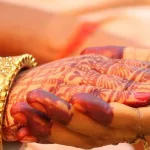TRADITION
Kashmir, besides its breathtaking natural beauty, is also a home to rich cultural heritage and vibrant traditions that define region’s brotherhood and community. The unique traditions, and customs of the land that were a cornerstone once, fostered not only a sense of unity, love, tolerance and mutual respect but also the most significant aspect of Kashmiriyat. But, unfortunately, these worth-preserving traditions that reflected the spirit of unity and generosity seem to have faded into obscurity. Being in touch with one’s roots is considered awkward in the present times. The rich traditions that contributed to the tapestry of our cultural legacy, and promoted a sense of unity among us, is all forgotten.
Gone are the days when weddings in Kashmir strengthened the very bond of brotherhood, resilience and affection by bringing neighbors, relatives and friends close to one another! Devoid of any pomp and show, comparison, competition, envy or jealousy, etc. those marriages served a strong bond, not just to unite two souls, two families but brought together kith and kin for preparations.
Be it any occasion, well-wishers, warmly, stepped in and showed their participation in true spirit. Amongst many pre-wedding preparations, there existed a time-honored practice that refuses to be simply forgotten, called Tomul Tchatun, a deep-rooted ritual wherein women from neighborhood warmly participated to clear the quintals of rice of all kinds of impurities through winnowing and handpicking. Swallowed by the clamors of modernity, this distinctive cultural legacy which is on the brink of extinction, craves for its renewal.
As I delve deep into the realms of past, I fondly recall, how pre-wedding participation of Tomul Tchatun, spread good vibes out in the vicinity regarding someone’s Khander (wedding). The traditional practice of rice winnowing where women used flat-baskets or wired planks made of willow sticks, locally called Shupp, to separate the rice grains from the chaff by tossing them in the air. The breeze carried away the lighter chaff while the grain fell back into the Shupp. But alas! The days have slipped in the haze of time, leaving mere memories in an age where convenience triumphs tradition.
At the heart of the clandestine tradition, the women from neighboring households would sit in the lawn of either Gober Moul or Kouri Moul (groom or bride’s parents) few days ahead of wedding, along with their own Shuppe (plural), just to make the event of Tomul Tchatun memorable as the tradition embodied the spirit of community and togetherness. Additionally, the women brought along packets of candies and showered them on the Izmand or Izmand Baye (bride/groom’s parents) in the start, to express their joy and love. They would also sit together in a circle, usually on the matting outside for it and sip a cup of traditional saffron Kahwa before the winnowing actually began. After that they would go on tossing the rice in their Shuppe and sang mellifluous customary songs simultaneously to spread happiness around.
The roots of timeless Tomul Tchatun tradition run deep, sustaining not just our brotherhood but the very essence of Kashmiri identity. Though I can’t recall every song, they sang. Yet, frequently, they would go with: ‘Bismillah Kareth Tomul Tchataaye, Issme Aazum Paraaye; Tomul Tchtaaye Raj Saend Undrai, Chundro Karyo Vaavij Vaav’….loosely translated as (Let’s start winnowing rice with Allah’s name, the bearer of all good names; As we’re winnowing rice in a prince’s house, let’s not overlook to show our love for him). Those elderly women prolonged their strains to let others hear what they actually meant like ‘Tomul Tchataaye Vaarai Vaarai, Dil Kararai Thaeyze’, a hint to bride/groom’s parents.
Ironically! The age-old practice of Tomul Tchatun is least practiced in contemporary Kashmiri weddings except in certain far-off villages where it is still in vogue. No doubt, modern-day marriages have evolved into a flourishing industry, but when they are juxtaposed against those of past, they fall short to preserve our cultural values. I vividly remember, how delicacies were cooked by the Waza (chef) for the women who participated in the Tomul Tchatun ritual. Not to talk of the towns, the custom, least prevalent even in villages, is reduced to the relic of a bygone era as the shadows of modernity looms large, casting doubt on the revival of once-thriving tradition.
It merits a mention here that Tomul Tchatun was also practiced in autumn season and on the onset of winter in Kashmir after thrashing and drying of (paddy) corn was over. However, this habit too has confined to either machines or to self-cleaning at home.
To conclude, it is heartening to lose sight of our roots and once-flourished traditions that defined us. Through collective efforts, we can safeguard this valuable cultural treasure & symbol of community, deeply-rooted in our culture for generation Z.
May this humble write-up serve as an endeavor to preserve plus revitalize this age-old tradition of Tomul Tchatun, and be alive in memories and practice, passing on the richness of cultural wisdom to those who come after us.
(The writer is regular RK columnist, educator and author. Feedback: [email protected])








